This DIY hand sanitizer takes only a few ingredients and just minutes to put together. This easy spray sanitizer recipe can be used on both hands and surfaces.
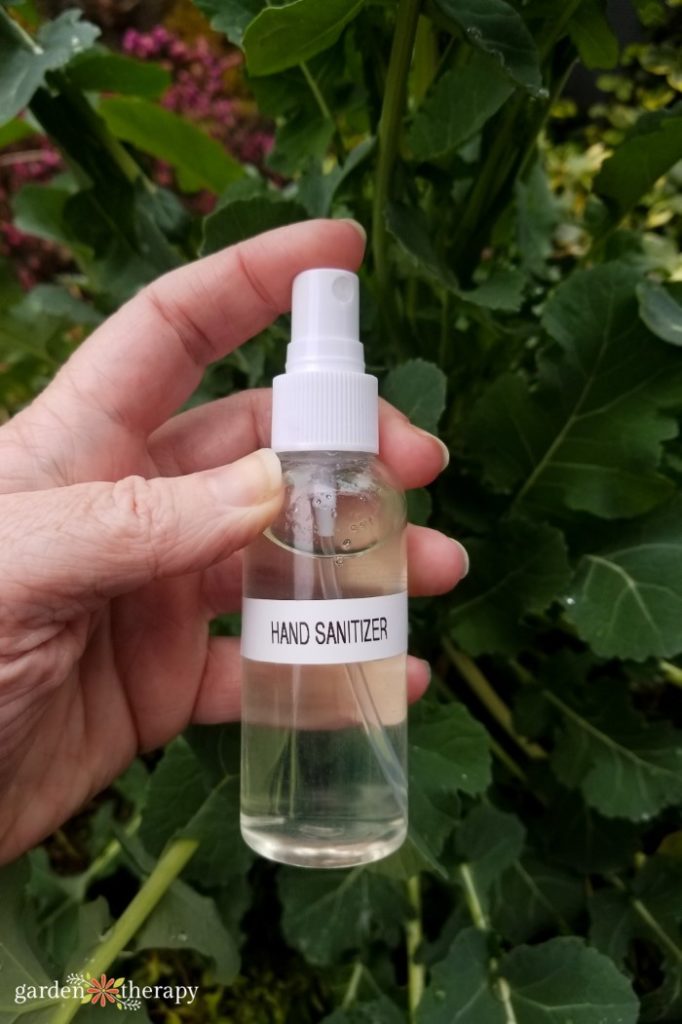
I’ve been seeing a lot of DIY hand sanitizer recipes popping up lately. Many of these are alcohol-based hand sanitizers made with isopropyl alcohol or even vodka.
In the past years, I have researched the proper formulation of sanitizers quite a bit. If you’ve seen my previous DIY hand sanitizer recipe, you’ll know that for years, I have been using natural and plant-based soaps and hand sanitizers to keep my hands clean and ward off germs for our family.
Thankfully, this has been my regular practice since my son started preschool and came home with what seems like every virus known to man. It was pretty hard for me not to catch them all with a snuggly and snotty toddler, but once I started being diligent about handwashing and not touching my face with my hands, it reduced the viruses I caught by about 80%.
So, let’s dive a little more into how to avoid getting sick, as well as this natural hand sanitizer recipe.
- How to Wash Hands
- Use a Nail Brush
- How to Dry Your Hands Properly
- Alcohol-Free Hand Sanitizer
- DIY Hand Sanitizer with Alcohol
- Is Isopropyl Alcohol Safe?
- How to Make DIY Hand Sanitizer
- Hand Sanitizer Materials
- Weigh Your Materials
- Make it
- More Helpful Natural Recipes
- References
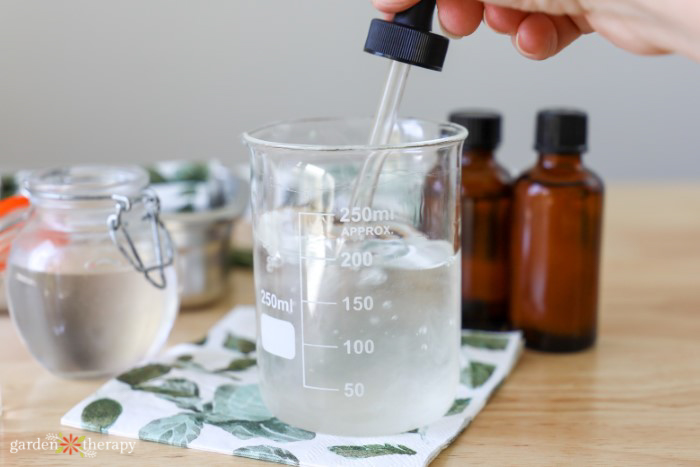
How to Wash Hands
I know it may seem silly to address the how-to of washing hands, but there’s definitely a right and a wrong way to do it.
First, I always use a natural soap. You won’t find antibacterial soaps in our house because I want to protect the natural microbial biome on our skin.
Use a Nail Brush
I do, however, include a nail brush in my hand washing. The hardest area of your hands to clean is underneath your nails. I use a soft brush like these. I also use a nail brush to hold my soap in the soap dish. This keeps them from sitting in a slimy, gloppy mess and allows the soap to dry and last longer.
I bought a pack of 10 and gave many away as gifts, and I have four of them in my home, one in each bathroom, one in the garden sink, and one in the kitchen. Atop each one of these nail brushes is a bar of natural homemade soap.
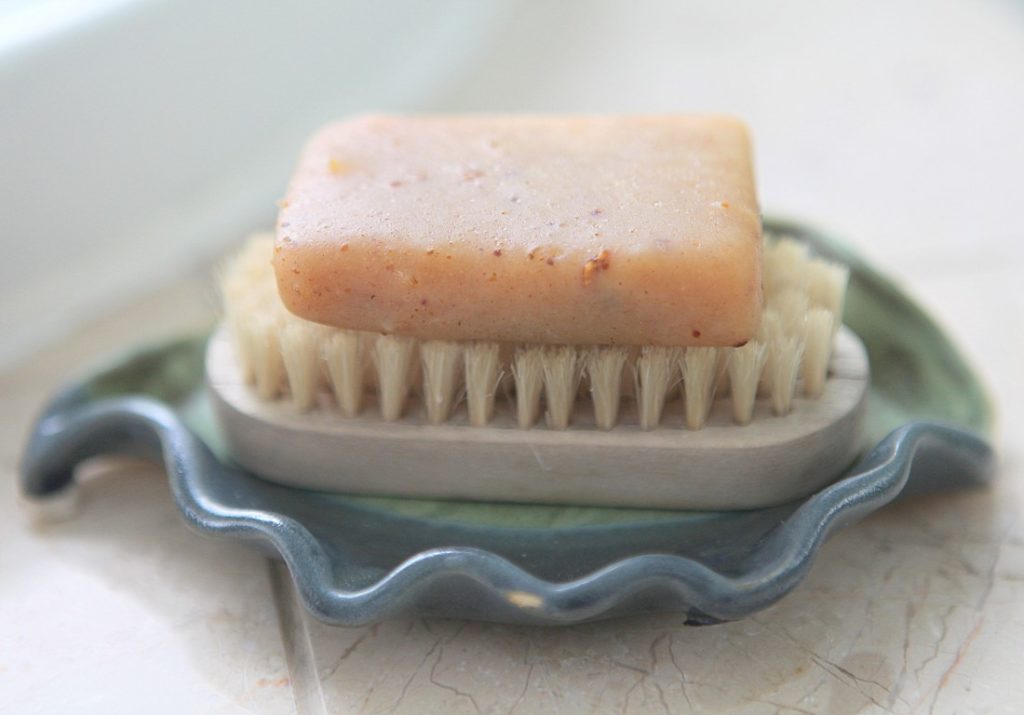
How to Dry Your Hands Properly
After my hands have been lathered up and rinsed, I dry them well on a clean towel. During cold and flu season, I keep a set of washcloths beside the sink. They can be used once to dry hands then put into a laundry basket and washed before being used again.
Alcohol-Free Hand Sanitizer
When I’m out and about, I use my homemade aloe vera hand sanitizer made with thieves oil, a recipe I shared back in 2015. I shake it well every time and apply it liberally to my hands. Then I rub my hands together like I’m washing them and try to wipe them on a napkin or towel. This hand sanitizer does not claim to disinfect or kill viruses but instead simulates hand washing when there is no sink nearby.
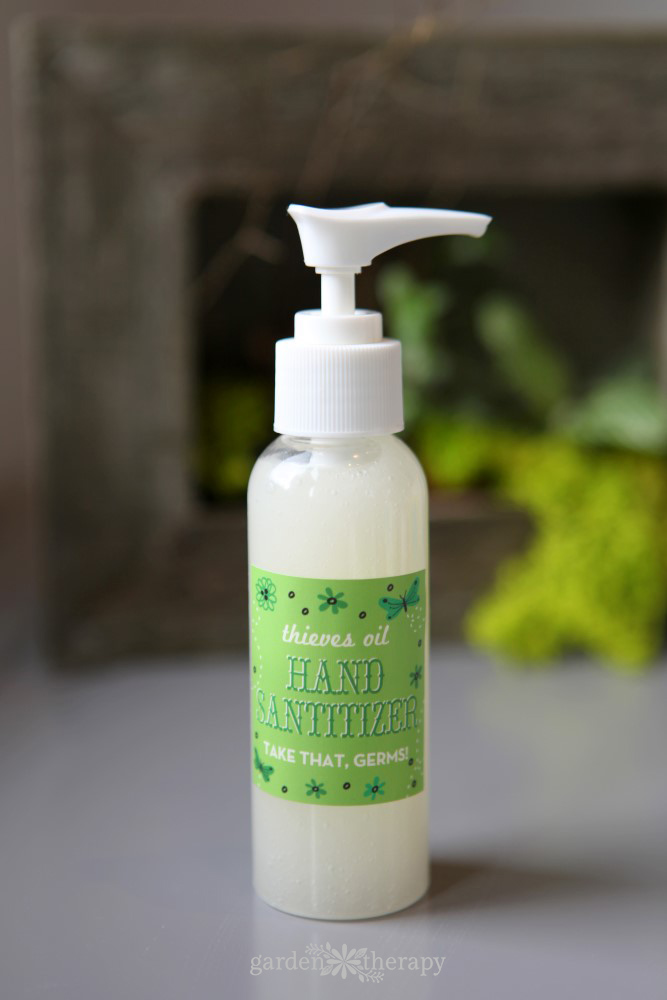
DIY Hand Sanitizer with Alcohol
Let’s talk about alcohol. The recommendation is that the hand sanitizer formulation needs to be 60% alcohol in order to be effective. I’ve seen different recommendations ranging from 60% to 70%, so let’s use 70% of our baseline to be safe.
This does NOT mean that your formulation needs to contain 70% as an ingredient. It means that 70% of the formulation needs to be alcohol. Vodka will not work in this application because it is only 40% alcohol. I’ve seen some formulations that include 70% isopropyl alcohol as just one ingredient in a formulation, but 70% isopropyl alcohol is 70% alcohol and 30% water (and other additives).
On its own, 70% isopropyl alcohol meets the minimum requirements, but this means you can’t combine it with other ingredients in order to make an effective hand sanitizer spray. To make your own hand sanitizer, you need 99% isopropyl alcohol, and then you can add 29% of other ingredients like aloe vera, witch hazel, distilled water, hydrosol, and essential oils.
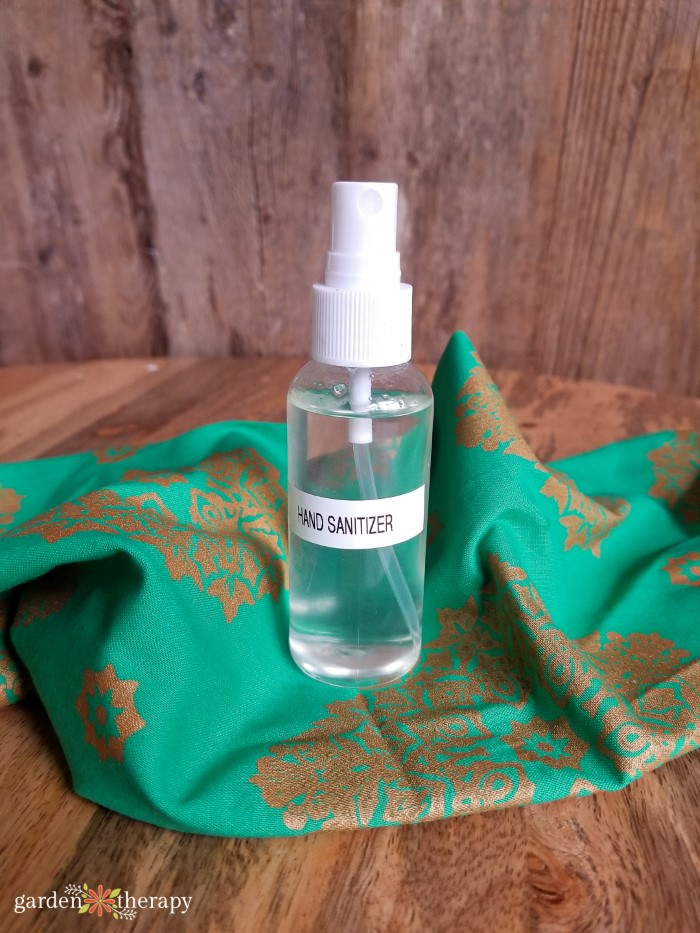
Is Isopropyl Alcohol Safe?
Isopropyl alcohol is most commonly used for sterilization. I use a small amount when formulating lotions and other skincare products to clean my tools and containers. It can also be used in healthcare situations to clean wounds.
In small amounts, there are usually no health issues; however, it can be toxic when inhaled or absorbed through the skin, and most definitely when ingested. Please DO NOT drink it, and if someone has, call medical help immediately. Breathing in the fumes in large amounts can also make you ill.
According to the Skin Deep database, it has a safety rating of 2, meaning it is generally a safe ingredient, but it is noted that it can cause skin irritation. Using it on your hands will certainly cause dryness, and extended use could cause dermatitis rashes and cracking. So, if you plan to use a hand sanitizer with Isopropyl alcohol, please do so with caution and use it sparingly.
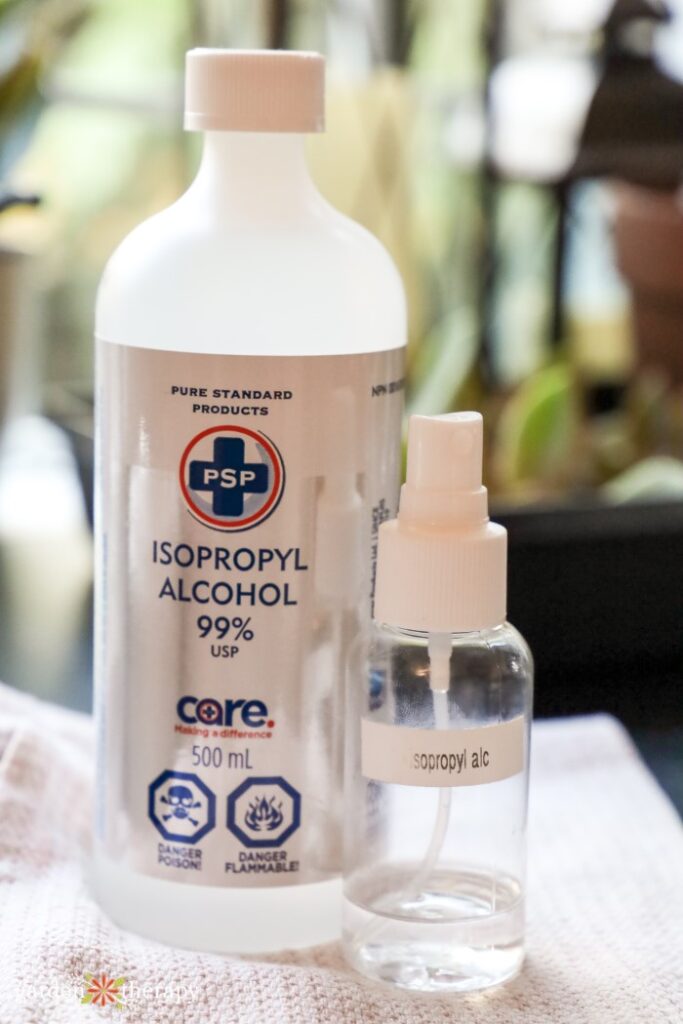
How to Make DIY Hand Sanitizer
This is one of the easiest recipes to make. I love that this is a spray sanitizer, too—it makes it much easier to use on surfaces as well as hands.
Before we get to the recipe, a quick disclaimer. All my homemade recipes, including this one, have not been tested by any third party and, as such, should always be used with caution. I recommend spot-testing this formulation before widespread use to ensure no adverse reactions. While I always do my best to provide useful information, any reliance you place on such information is strictly at your own risk. This post is not a substitute for medical, legal, or any other professional advice of any kind.
Hand Sanitizer Materials
This is what you need to make a 100 ml spray. If you want to make more, you can double the batch and divide it into different spray bottles. I like to keep one in my purse and one at home. If you have a diaper bag, you could stash one there as well.
- 75 ml Isopropyl alcohol 99%
- 10 ml witch hazel or lavender hydrosol
- 15 ml aloe vera gel
- 4 drops each of sweet orange, lavender, and tea tree essential oil
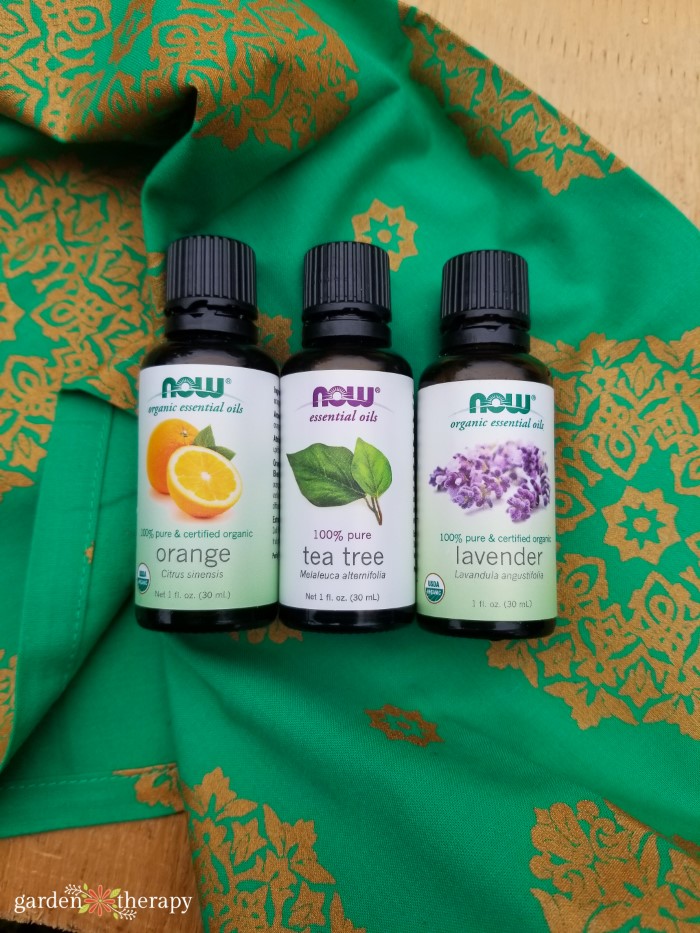
Weigh Your Materials
The only way to get a truly accurate measurement of the ingredients is to weigh them. A basic kitchen scale like this one is all you need. You’ll find it’s much easier than using measuring cups too.
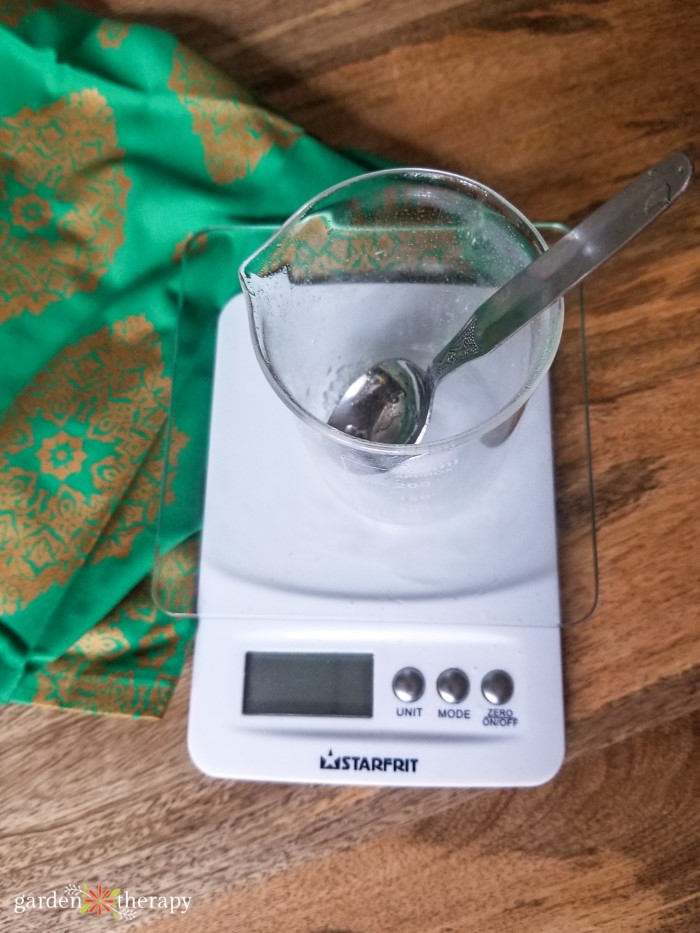
Make it
Using a funnel, add all of the ingredients to a 100ml bottle with an atomizer cap.
Screw the lid back on, and then to combine the ingredients, simply shake well. Make sure to give it another vigorous shake each time before you use it as well.
Whenever you use DIY hand sanitizer spray (or any spray sanitizer for your hands), spray your hands so they are fully covered, rub them together, then let them dry.
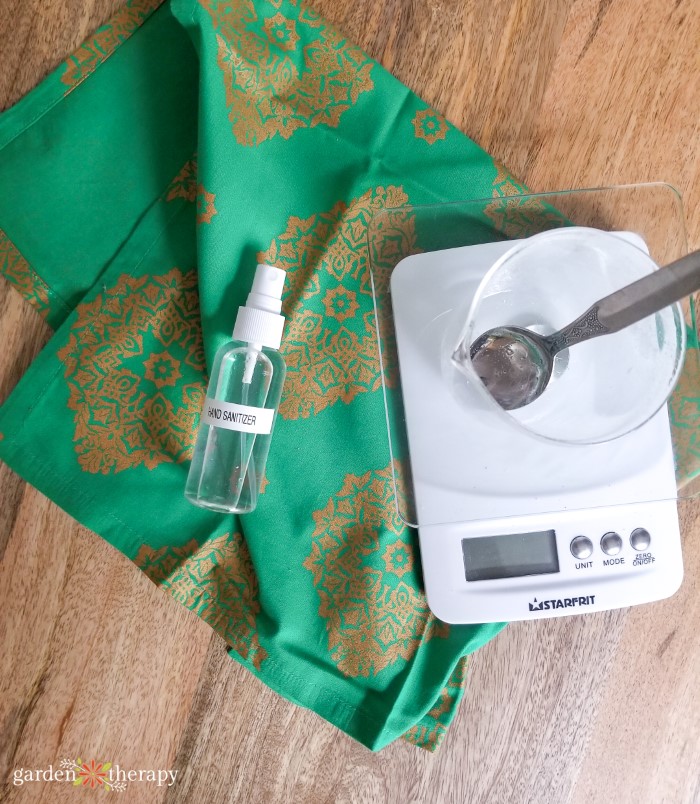
Hand Sanitizer FAQ
The alcohol in this recipe will make the shelf life indefinite. However, the other ingredients will start to lose effectiveness over time, so I recommend using it within three months.
It takes some regular combining to keep the aloe and the alcohol together. I whisk the batch when I make it and then shake it every time I use it, and eventually, it bonds together. Mine doesn’t need shaking after I have been using it for a week.
It could also be the type of aloe vera you’re using. I recommend the brand Lily of the Desert.
I add witch hazel and aloe vera for skin-softening properties. Alcohol and essential oils alone can be harsh on the skin.
More Helpful Natural Recipes
- DIY Eucalyptus Shower Steamers
- Natural Common Cold Remedies
- Herbal Roll-On Remedies for Cold and Flu
- All-Natural Chest Vapor Rub Recipe
DIY Hand Sanitizer Spray
Equipment
Supplies
- 75 ml Isopropyl alcohol 99%
- 10 ml Witch hazel or 10 ml Lavender Hydrosol
- 15 ml Aloe vera gel
- 4 drops Sweet orange essential oil
- 4 drops Lavender essential oil
- 4 drops Tea tree oil
- 1 small funnel
- 1 100 ml glass spray bottle
Instructions
- Measure all ingredients by using a kitchen scale.
- Pour all ingredients into the glass spray bottle, using the funnel.
- Shake well.

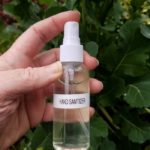
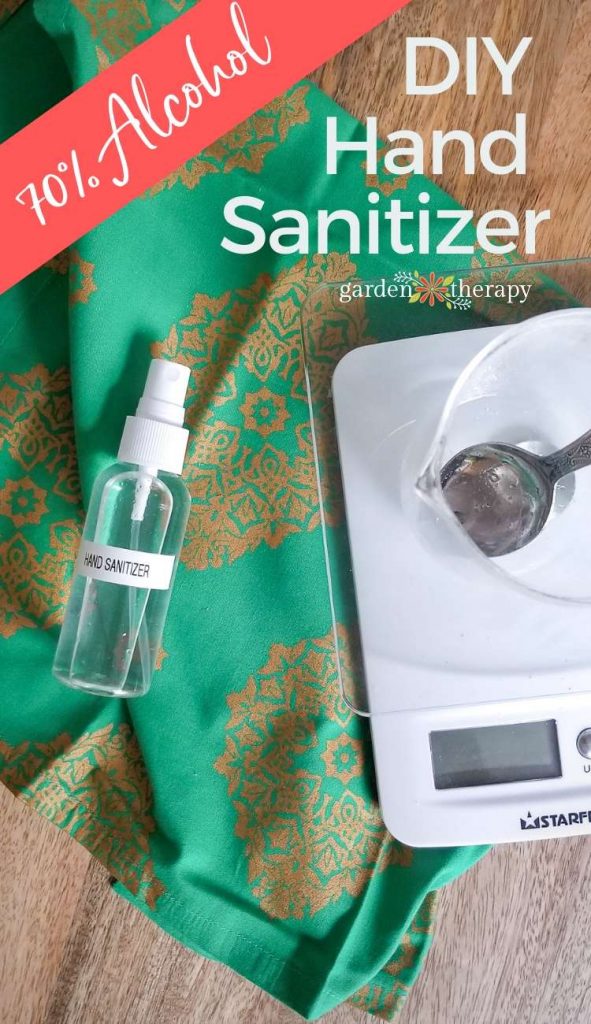
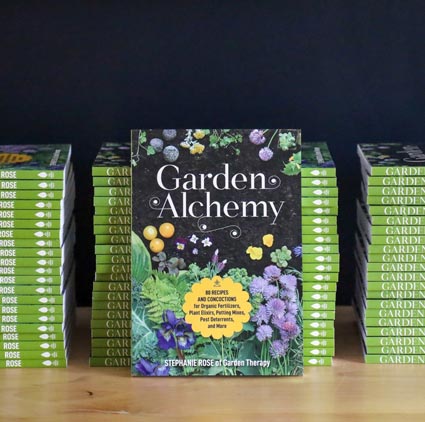


Thank you for the recipe. I like the tip about placing washcloths by the sink, to dry hands, when there is illness in the house.
I am curious, why can’t I just use regular alcohol with a few drops of essential oil and thats it?
I add the witch hazel and aloe for skin softening properties. Alcohol and essential oils can be harsh on skin.
Thank you for this “recipe” and all the other information. Is there another ingredient you would suggest for people who are sensitive to aloe?
You could swap the aloe for witch hazel or hydrosol.
Thank you.
I have all the ingredients except for the essential oils, although I do have some grapefruit essential oil. Are the essential oils “essential” for this recipe or just optional? If leaving them out would the hand sanitizer be diminished in anyway except for the scent?
Sorry to say that a weight scale would be of no use to make your recipe. ML is a volume measurement, not a weight measurement. A graduate cylinder or measuring cup is necessary to measure volume.
Hi Bill, thanks for the input. I wonder why my digital kitchen scale measures in ml, then? It seems you can choose to do it in a measuring cup or a scale, which ever is most convenient. As I use a scale for all of my recipes, it is most convenient for me, for accuracy and for measuring small volumes. Thanks.